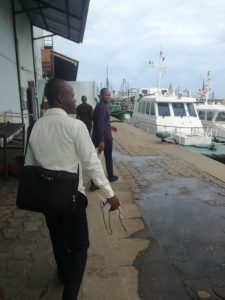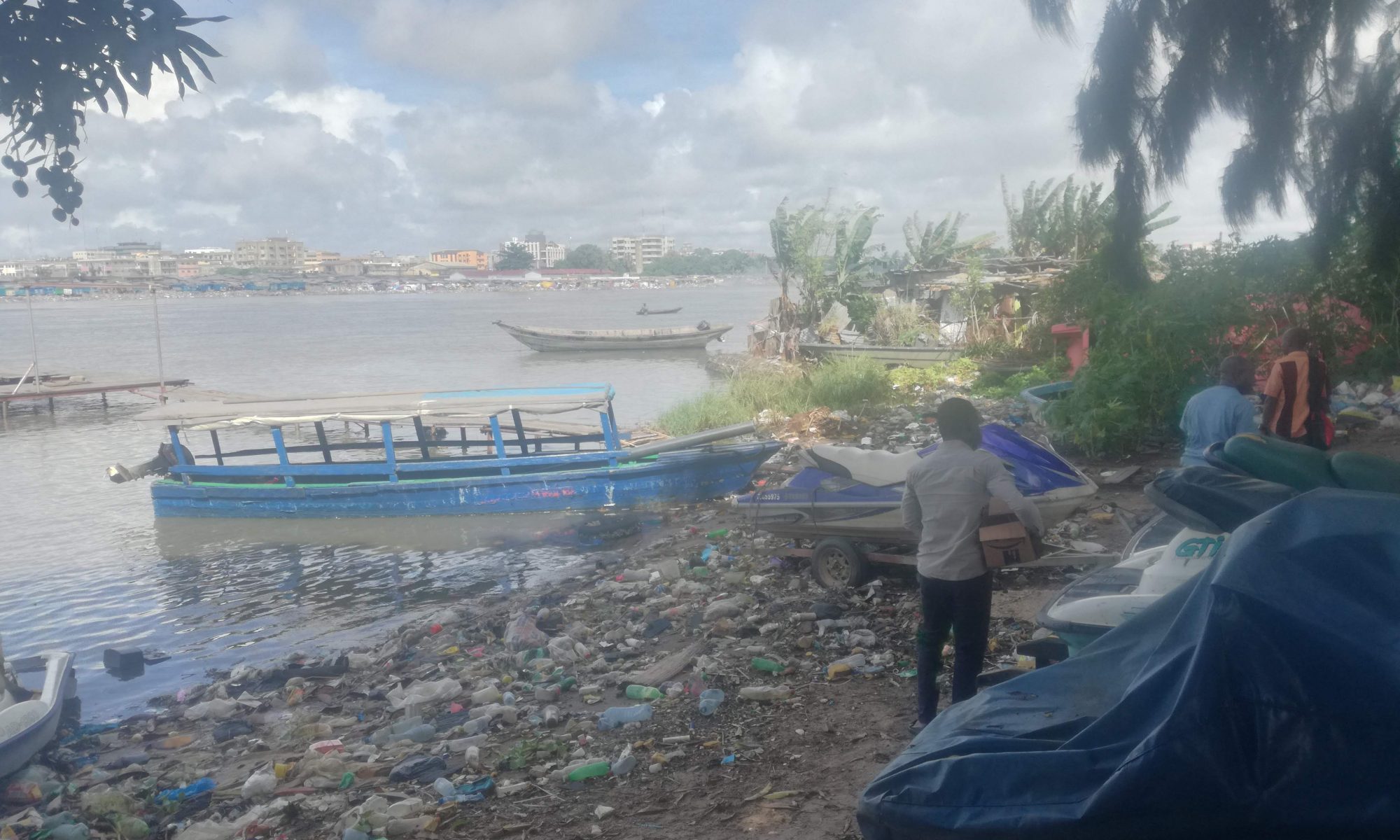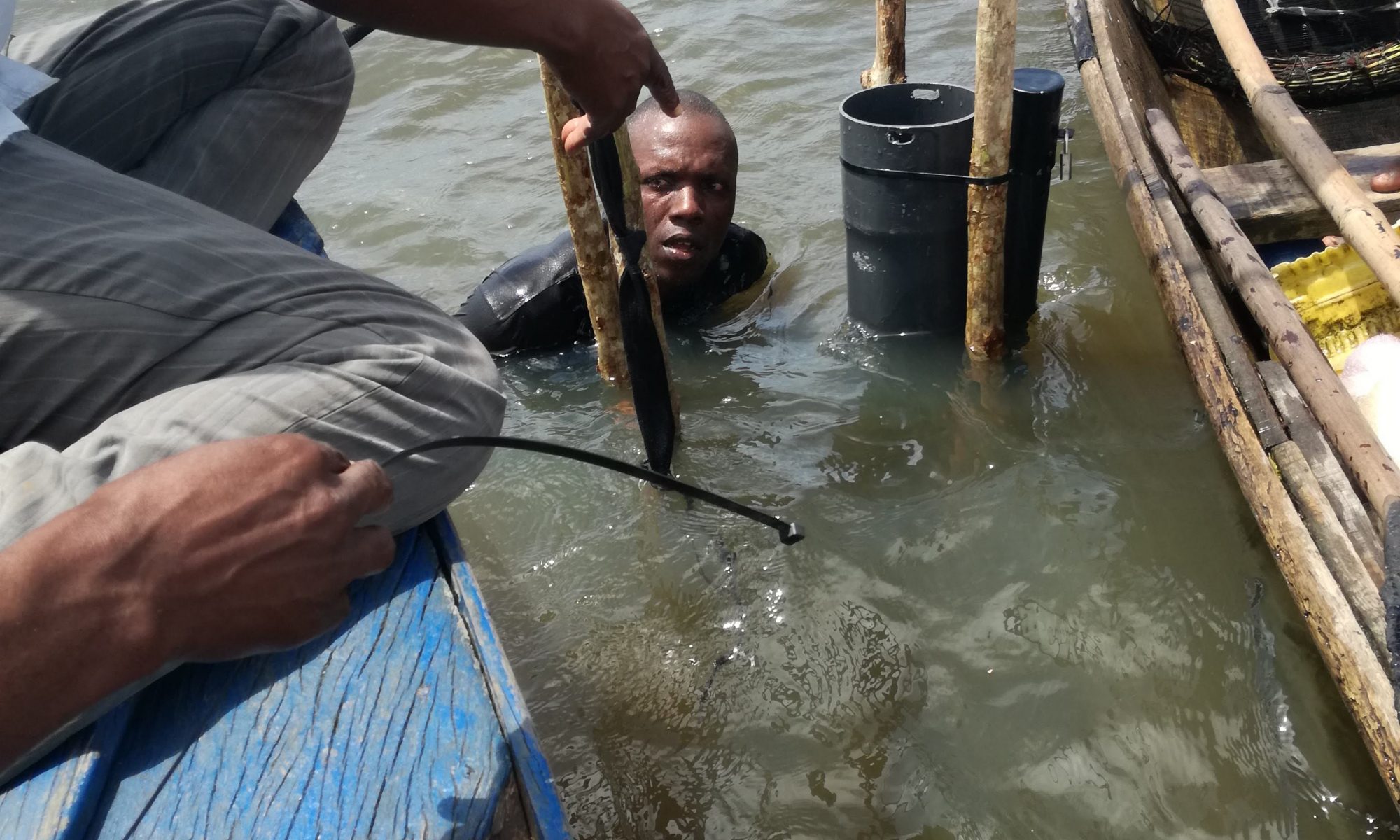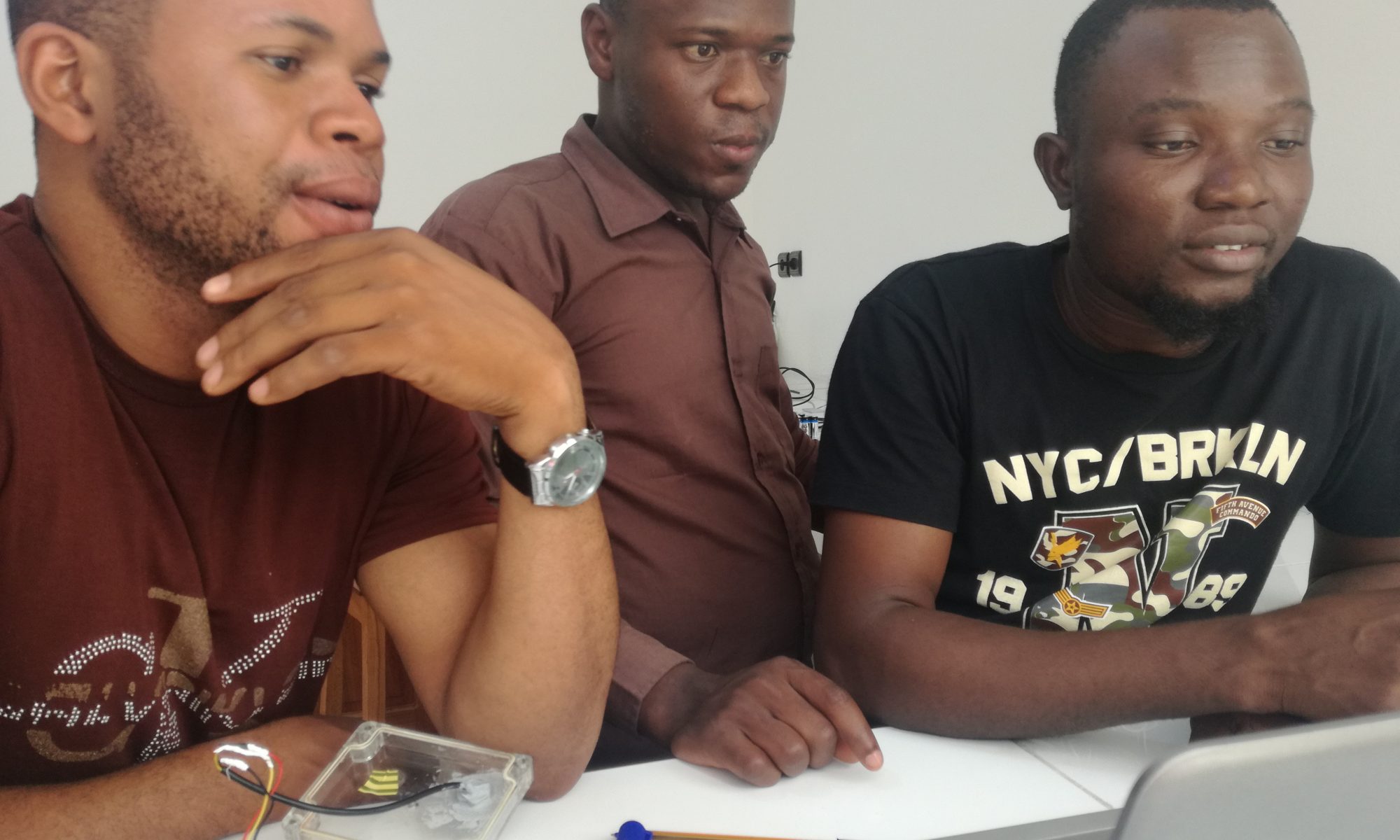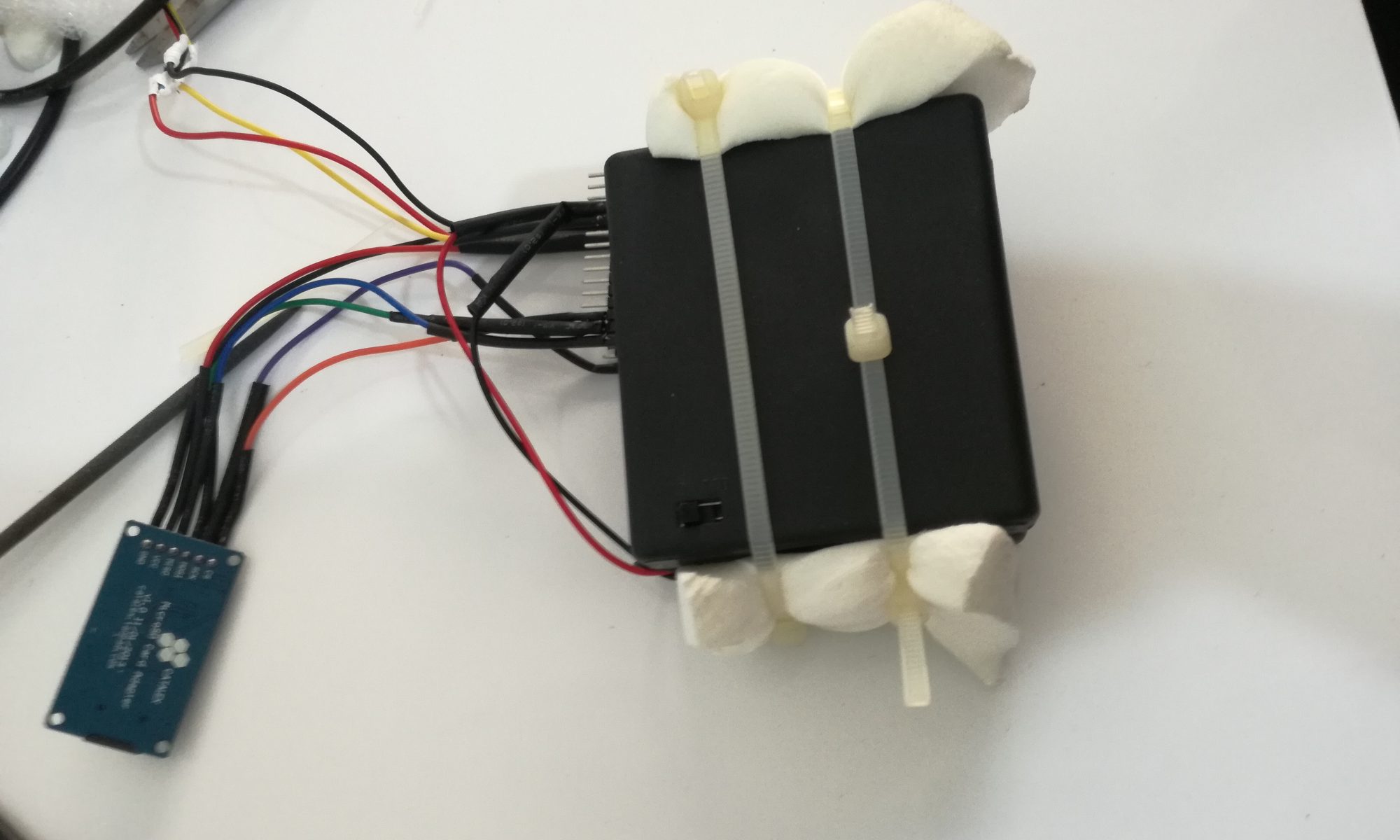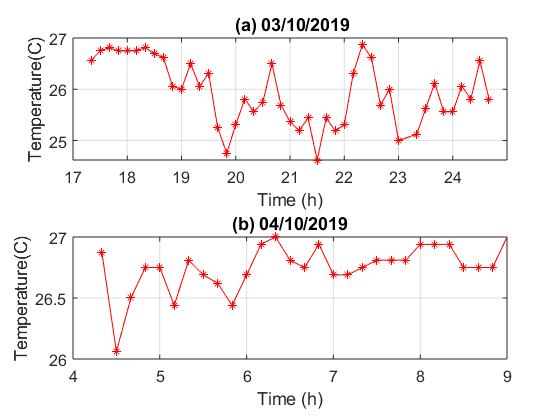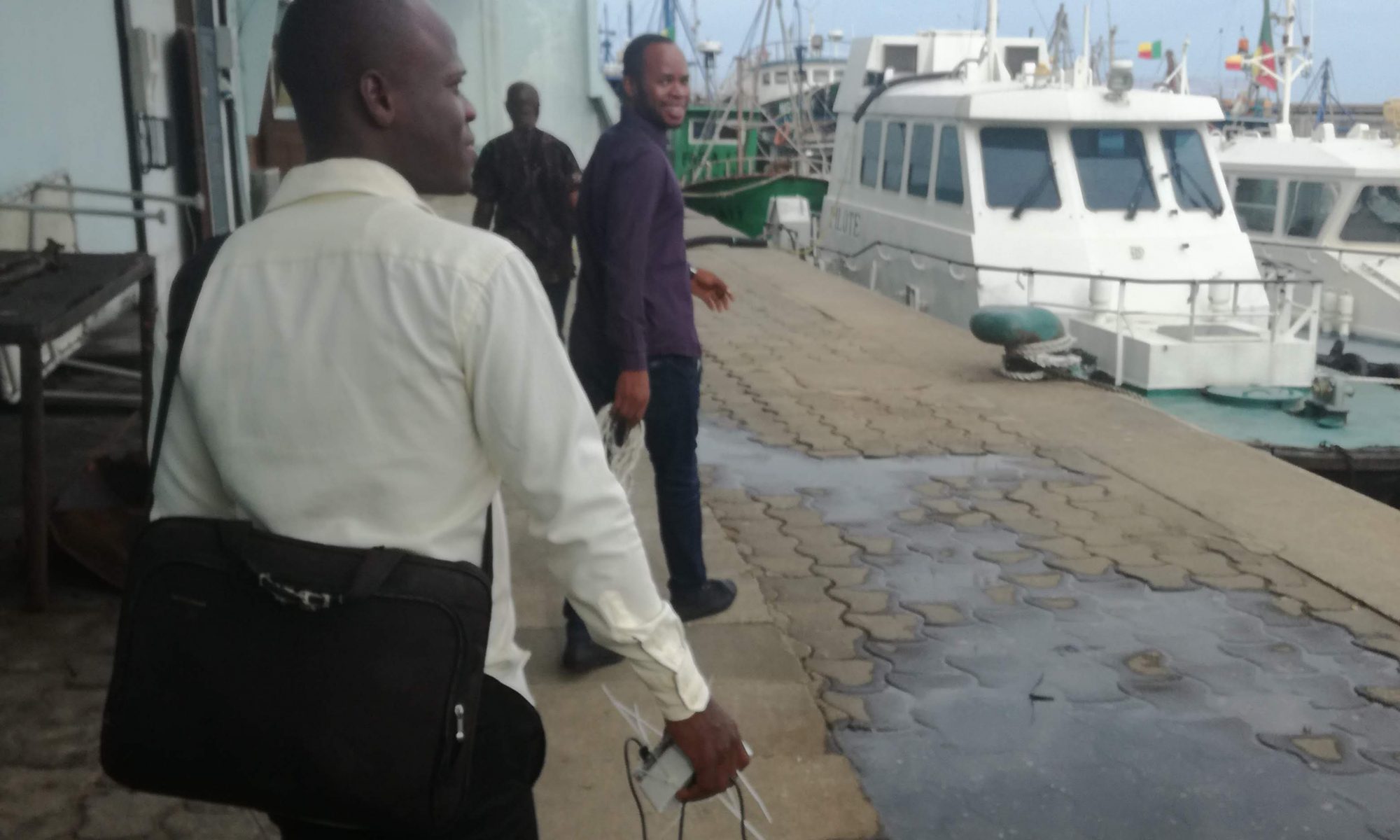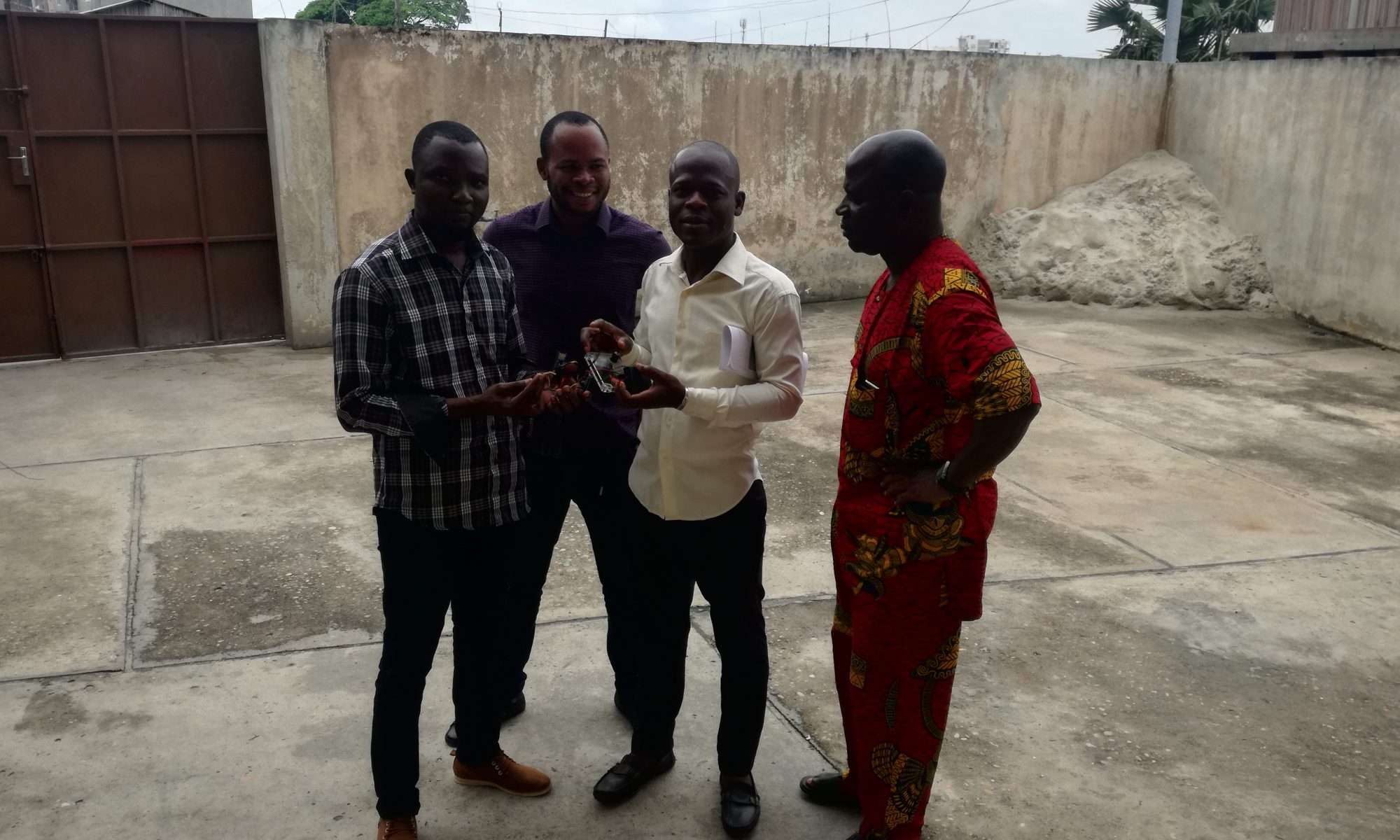Désolé, cet article est seulement disponible en English.
(English) Reanalysis of the first results
Test du système
Vendredi le 11 Octobre 2019
Rapportage et photos: Medard Honfo, Katrijn Baetens
Après plusieurs jours de travail à l’IRHOB, trois systèmes embarqués à thermomètre ont été conçus par Katrijn, Zacharie, Sylvain , Wilfried et Médard. Hier, on a constaté que les résultats du système étaient stables, et il n’y avait plus de coupure d’électricité pendant les 24 heures. Alors, nous sommes confiants pour opérationnaliser les capteurs. Après ces dernières vérifications, l’équipe et Mr Victor Okpeitcha, un ingénieur océanographe qui travaille au IRD/IRHOB ont pris une pirogue pour aller déposer les thermomètres dans trois stations. Un dans le chenal, un au centre du lac et un à l’ouest. Les stations sont toutes installées à côté d’une station existante de l’IRD/IRHOB pour permettre de valider notre système . Voir la carte pour les positions exactes.
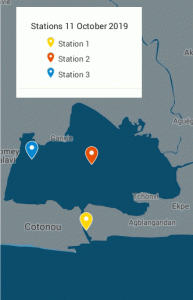
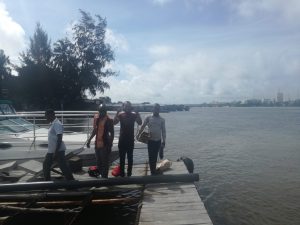
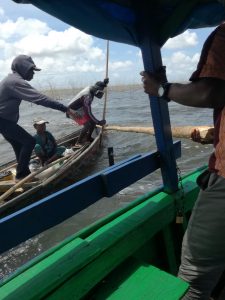
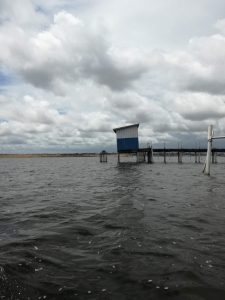
Installation des capteurs:
Etape 1 : fixer le tuyau dans l’eau
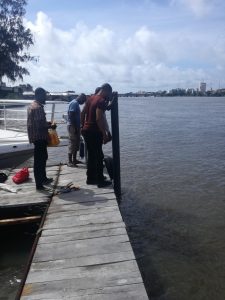
Etape 2 : mettre le capteur dedans
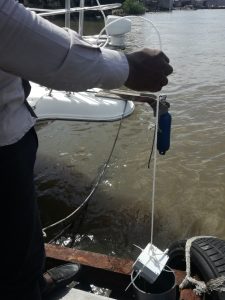
Etape 3 : fermer le tuyau
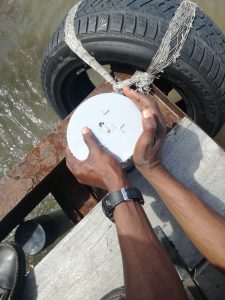
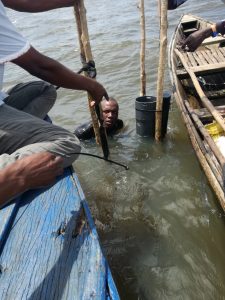
Les étudiant de l’IRHOB ont construit le capteur eux-mêmes
Jeudi, le 10 Octobre 2019
Rapportage: Wilfried Sintonji
Photos: Katrijn Baetens et Wilfried Sintonji
Aujourd’hui, deux nouveaux thermomètres ont été fabriqués, testés puis soudés par les étudiants. A cet effet, d’autres boites payées en remplacement de celles conventionnelles ont été préparées puis testées.
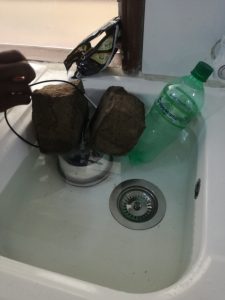
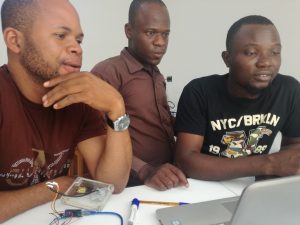
Après plusieurs jours d’erreur d’installation du module internet, cette cinquième séance de travail a favorisé la réussite de l’nstallation du module internet. Ce module internet nous permet de recevoir des messages GSM venant de nos capteurs quel que soit le lieu où il est installé. Pour la plupart de ces essais, les messages GSM que nous recevions grâce à notre système de capteur étaient vides. Nous pouvons désormais nous réjouir de cet acquis.
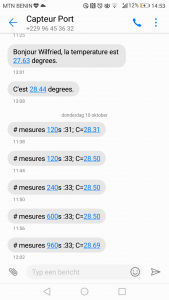
Enfin, le système de thermomètre préalablement déposé hier à 17h47 a été récupéré au port autonome de Cotonou pour être lu le lendemain.
Ajouté un amortisseur au système
Mardi, le 8 Octobre 2019
Rapporteur: Médard Honfo
Photos: Katrijn Baetens
Aujourd’hui, on a continué à améliorer le système. On a découvert que des chocs sont a l’origine des petits coupures d’électricité. On a conceptualisé un système qui peut absorber ces chocs.
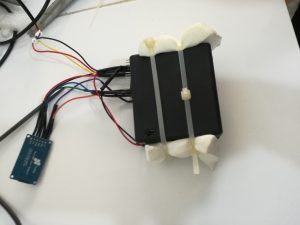
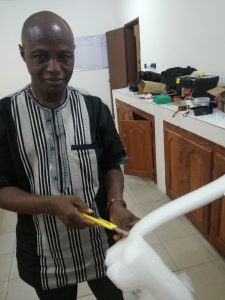
Au soir, à 17h00 (heure locale), on a mis le nouveau concept dans le port.
Analyse des premières données et amélioration du capteur
Lundi, le 7 Octobre 2019
Rapportage et figure: Sylvain Amoussou
Photos: www.lastminuteengineers.com
Nous avons analysé les données du premier capteur de température qui a été placé au port de pêche de Cotonou le vendredi 3 octobre. Les résultats du 3 octobre montre que la température est presque constante (en moyenne 26.6 ) de 17h00 à 18h45 (figure1 (a)), et elle varie à partir de 19h00 jusqu’à 7h00 du matin UTM, le 4 octobre (voir Figure1 a-b). Mais à partir de 7h00 UTM du matin jusqu’à 9h00 UTM, elle est presque constante. En conclusion, nous remarquons que la température mesurée par le premier capteur varie dans la nuit mais reste constante dans la journée.
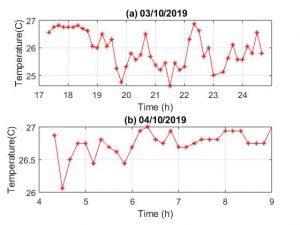
Nous notons aussi quelques problèmes avec le capteur. Le capteur s’est arrêté pendant quelques heures, tout comme le GPS. On a donc exécuté quelques tests additionnels et ajouté quelques améliorations aux autres capteurs:
1) Vérification de la tension et de l’intensité du courant aux bornes des piles.
Apres avoir récupéré le premier capteur, nous avons mesuré la tension et l’intensité du courant aux bornes des piles. Nous avons trouvé 6.28 V et 60mA aux bornes des piles. Nous remarquons que presque la moitié des 12V a été utilisé en moins de 24h. On pense de diminuer la fréquence des mesures (pour l’instant, c’était une mesure toutes les 10 minutes).
2) Chargeur des batteries GSM.
Nous avons trouvé un moyen pour charger les batteries GSM, afin de réaliser les prototypes d’internet pour pourvoir enregistrer les données qui seront prises par les capteurs via internet.
3) Ajouter un module internet.
On est parvenus à envoyer quelques sms avec le capteur, mais ils étaient vides. On continue.
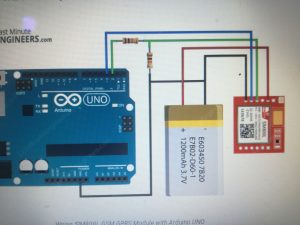
Mise en place du premier capteur
03/10/2019 à l’Institut de Recherches Halieutiques et Océanologiques du Bénin (IRHOB)
Rapportage: Wilfried Sintondji
Photos: Wilfried Sintondji et Katrijn Baetens
Commençant à 9h00, cette séance a connu la participation active de Katrijn BAETENS et de plusieurs personnes de l’Institut de Recherches Halieutiques et Océanologiques du Bénin (IRHOB) (Directeur Dr SOHOU Zacharie, Dr DEGBE Georges et Mr HONFO Médard). Il est important de noter la participation active des étudiants sélectionnés dans le cadre de ce projet, il s’agit de Mr AMOUSSOU Sylvain et de Mr SINTONDJI Wilfried.
Après une présentation complète de tous les participants présents, l’assistance a eu le plaisir de suivre religieusement la présentation des matériaux apportés par Katrijn BAETENS. A cette occasion, elle a expliqué l’ensemble des constituants du thermomètre programmé qu’elle a réalisé depuis la Belgique. Katrijn a aussi apporté depuis la Belgique plusieurs autres pièces constitutives de ce même thermomètre, ainsi une tâche bien définie est confiée à chaque étudiant dans le but de réaliser un nouveau thermomètre identique à celui apporté. Cette réalisation comprend plusieurs phases, parmi lesquelles nous pouvons citer :
- Préparation de l’étanchéité du boîtier
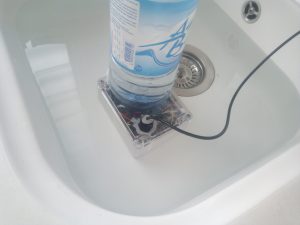
La boîte est étanche dans des conditions controlées - Contrôle de voltage du système
- Test des éléments constitutifs avec un résistor sur le BREADBOARD
- Mise en liaison des différentes pièces constitutives, comme le GPS et son antenne, le port carte mémoire, la plaquette à internet, les batteries et la sonde du thermomètre
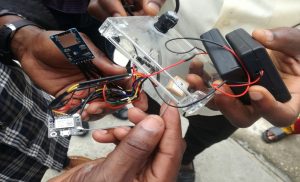
Le système tourne indépendamment et le GPS marche en extérieur - Programmation du thermomètre pour l’enregistrement automatique/période voulue de la température
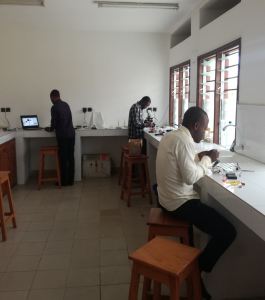
Le thermomètre est ensuite déposé dans les eaux du port autonome de Cotonou sur le site de la base militaire du port, ce même jour à 17h00, pour être repris après 24 heures.
